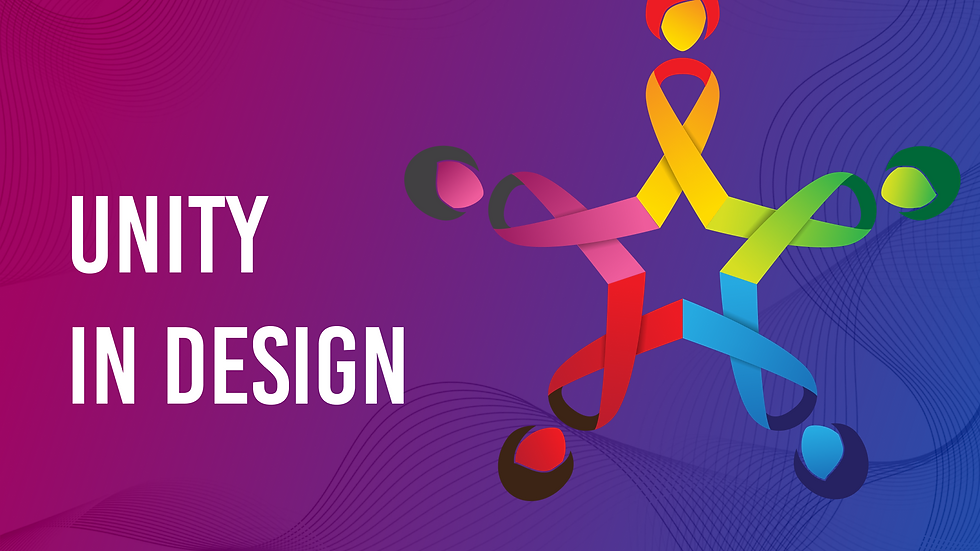Power of Contrast in Design: Elevating Design Through Visual Dynamics
- Rohit Kumar Verma
- Apr 8, 2024
- 3 min read

In the realm of design, contrast stands as a powerful force, capable of transforming ordinary compositions into visually captivating masterpieces. From bold typography to striking colour combinations, the deliberate use of contrast adds depth, emphasis, and interest to designs of all kinds. In this blog post, we'll explore the concept of contrast in design, its significance, and how it can be effectively employed to create impactful visual experiences.
Defining Contrast
Contrast, in design, refers to the deliberate juxtaposition of elements with distinct characteristics to create visual interest and emphasis. These elements may differ in terms of colour, size, shape, texture, or value. By highlighting differences, contrast draws attention, creates depth, and enhances the overall visual hierarchy of a composition.
The Importance of Contrast
Contrast plays a crucial role in design for several reasons:
Emphasis and Focus: Contrast helps guide the viewer's attention by emphasizing certain elements over others. By making elements stand out through differences in colour, size, or style, designers can direct the viewer's gaze and communicate key messages effectively.
Visual Hierarchy: Contrast is essential for establishing a clear visual hierarchy within a composition. By varying the contrast between elements, designers can create a sense of order and importance, making it easier for viewers to navigate and understand the content.
Enhanced Legibility: Contrast is critical for ensuring legibility and readability, particularly in typography. By contrasting text with its background through differences in colour or value, designers can ensure that the content remains clear and easy to read.
Visual Interest and Engagement: Contrast adds visual dynamism and excitement to designs, making them more engaging and memorable. Whether through bold colour combinations, dramatic scale differences, or unexpected juxtapositions, contrast captures the viewer's attention and stimulates interest.
Types of Contrast
There are various types of contrast that designers can leverage to create compelling compositions:
Colour Contrast: Differences in hue, saturation, and brightness create colour contrast, which can be used to evoke mood, create emphasis, and establish visual hierarchy.
Size Contrast: Variation in size helps create scale and proportion within a composition, drawing attention to larger elements and establishing a sense of balance.
Shape Contrast: Contrasting shapes add visual interest and diversity to designs, allowing designers to create dynamic compositions with varied forms and silhouettes.
Texture Contrast: Differences in texture, whether smooth versus rough or glossy versus matte, add tactile interest and depth to designs, enhancing their sensory appeal.
Practical Applications of Contrast
Designers can apply contrast in various ways to achieve specific design goals:
Creating Attention-Grabbing Headlines: Use bold typography with high contrast to create attention-grabbing headlines that draw readers into the content.
Establishing Visual Hierarchy: Vary the contrast between different elements to establish a clear visual hierarchy, guiding viewers' attention from the most important to the least important information.
Highlighting Key Information: Use contrast to highlight key information, such as calls to action or important statistics, making them stand out from surrounding content.
Adding Drama and Impact: Experiment with dramatic contrasts to add excitement and impact to designs, whether through striking colour combinations, bold graphic elements, or dynamic compositions.
Contrast in Design Conclusion
In the world of design, contrast reigns supreme as a fundamental principle for creating visual interest, emphasis, and hierarchy. By strategically leveraging differences in colour, size, shape, and texture, designers can elevate their compositions, captivate audiences, and communicate messages with clarity and impact. Whether designing websites, print materials, branding assets, or digital interfaces, contrast remains a powerful tool that can transform ordinary designs into extraordinary experiences. Embrace contrast, and unleash the full potential of your creative vision.



Comments